Ok, I have three dogs. You never know what will happen. I have to say, this experience that i am about to describe has been the most unbelievable thing yet. One of my three seems to be the most mischievous.
I have a Rhodesian ridgeback. He is 2 years old, likes to hunt, run, and jump. He is funny and sweet. There is also a disgusting streak that runs deep in him. We jus had a 9 in snow drop. He was out romping and having a fun time. I was keeping an eye on him, and he wears a remote leash. When he gets too far or I want him inside, I call him and press the button (on the lowest setting possible).
Well, I noticed him in the front yard under a cedar tree, close to the street. I wanted him to come towards the back where it is safer. I called him, and pressed the button. He completely ignored me and was laser focused on something he had. I couldn’t tell what it was, but I knew it was going to be gross.Â
Since it was freezing cold, I went upstairs to bundle up and put on some boots. As I came down the stairs I could see him up closer to the house, so I could go out the front door to grab him. I walked out onto the porch and looked at the snow-covered ground (my front yard is a 1 acre sloping hill). What ever he had in his mouth (still) was bleeding all over the yard. It looked like a massacre had occurred. I could not believe the amount of blood spilled everywhere. This is where my panic driven heart attack began. I looked at my dog and he was holding in his mouth, in a protective manner, some type of animal head. Yep, I said head. AHHHHH was my first response. I then had to get him to DROP IT! I needed to put it in a bag and try to identify it, incase it was another dog. It looked like a dog or canine type animal. I rolled it over and could not tell what it was. With a stick I was able to get it into a large bag. I called animal control, they came out and identified it as a deer head. OMG! I was so disgusted.
It was traumatic and finally over. Or so I thought. One week later, the dog came running back to the house to come inside to enjoy his new find. It was a leg of the deer that still had ‘material’ on it. Again…AHHHHH. So with much yanking and demanding he finally relinquished the ‘bone’. Bagged it and threw it away.
So now I need to go into the woods and find this animal before anymore of it ends up on or near my porch. Not to mention any illness my dogs may get by eating this thing. Well for now that is the end of this experience. With any luck there will be no more shocking scenes. UGH!
I found this on Answers.com. It is great info, I have a ridgeback and I thought he was a mix breed. He has a spotted tongue…perhaps he is not as mixed as I thought.
Airedale
Akita
Australian Cattle Dog
Australian Shepherd
Belgian Sheepdog
Belgian Malinois
Bichon Frise
Bull Mastiff
Cairn Terrier
Collie
Cocker Spaniel
Dalmation
Doberman Pinscher
English Setter
German Shepherd Dog
Golden Retriever
Gordon Setter
Great Pyranees
Irish Setter
Keeshond
Labrador Retriever
Mastiff
Newfoundland
Pomeranian
Pug
Rhodesian Ridgeback
Rottweiler
Siberian Husky
Tibetan Mastiff…..
as well as several other breeds that are less well known here in the United States.
And to throw in there as well what is the cause of this. The black spots on a dog’s tongue are a result of excessive pigment, much the same as freckles or birthmarks that might appear on you and I
 I have a young dog with arthritis. It is sad and frustrating for him and myself. He wants to run, play and wrestle…and sometimes just can’t. So I have been reading about it and thought I would share some of the things I learned. Feel free to visit the web site listed below.
Osteoarthritis that is a progressive degenerative joint disease where the cartilage breaks down causing the bones to rub against each other and the result is dog joint pain and stiffness.
Hip Dysplasia is a genetic degenerative disease cause by a malformation of the hip sockets. Chronic inflammation of the joints occurs and the tissues surrounding the area begin to deteriorate and breakdown.
Elbow Dysplasia is also a degenerative hereditary disease where the bones do not form well and causes the bones to chip. It is considered to be hereditary and is seen as a common cause of front-leg lameness in larger breeds of dogs.
Knee Dysplasia is a malformation of the leg bones that causes the loosening of bone at the kneecap which is painful, and causes lameness and limping in your dog.
Hypertrophic Dog Arthritis is excessive bone growth or spurs in the joints.
Osteochondrosis results from poor breeding practices caused by a poor diet that leads to cartilage deterioration.
Degeneration of the Shoulders whereby unstable joint or trauma cause the breakdown of cartilage in the shoulder, leading to inflammation and pain on movement, and consequently, chronic canine arthritis that affects other parts of the body as well.
Degenrative arthritis is a painful condition and can make your dog’s life miserable, therefore the sooner you detect the signs of dog arthritis, the faster you can adopt measures to slow its progression and help save your dog from further pain. Here is a rundown on some of the signs and symptoms that your dog may have athritis:
 |
- Stiffness, lameness, or limping after rest
Loss of appetite or unusual weight gain- Inactivity and sleeping a lot more
- Relutance to walk, run or climb stairs
- Unusual urinating in the house
- Irritability and behavioural changes
- Depressed or withdrawn
http://www.dogarthritisnomore.com/
Arthritis doesn’t discriminate. It affects not only people of all ages — including children — but also strikes our furry friends, too. If you’re a dog-owner, you make sure your buddy takes his heartworm medicine, eats well, looks bright-eyed and playful, and greets you as only a doggy can when you come home. You notice changes in mood and activity, so if your pet isn’t feeling his best you may suspect a cold or stomach virus – but it could be arthritis. In fact, arthritis affects one in every five adult dogs in the U.S. and is one of the most common sources of chronic pain that veterinarians treat
Dino to Fido
Arthritis is one of the oldest diseases in history. We know that the dinosaurs had it and there is evidence that early humans lived with the same chronic aches and pains. So it makes sense that Dogs Get Arthritis, Too. In fact, it is a common ailment of man’s best friend.
The Human-Hound Connection
Now you know that both you and your dog can get arthritis, but did you know that managing your dog’s arthritis can help you better manage yours? It’s true that having a pet can give you a positive spin on life, boost your attitude and lift your spirits. Pet-owners also tend to live longer and have fewer visits to the doctor’s office.
More good news is that the treatment strategy for osteoarthritis in humans and in canines is similar:
- Early diagnosis and treatment
- Maintaining a healthy weight
- Exercise
- Proper medication
Don’t Spare Yourself to Spoil the Dog
We can’t help it. We spoil our pets. If you focus more on your dog’s health than on yours, try these tips to keep both of you healthy and active.
Visit the doctor. Your pet needs to see the veterinarian at least once a year for a check-up – maybe more. When you make his appointment, call your own doctor and schedule one for yourself. Make sure you both get some baseline X-rays to chart your bone deterioration.
Shed excess pounds. Pay more attention to what your pet eats and when, and do the same for yourself. Read the food labels for each of you to make sure that every bite is giving you both good energy and nutrition. Limit your servings and don’t cheat by eating between meals or slipping Fido extra snacks.
Coordinate your dog’s medication schedule with your own to make sure you both take your dosage every day. Arrange medicine with mealtime if it needs to be taken with food. Keep your meds together so you will see yours every time you reach for his. Use colorful stickers or permanent markers to help distinguish whose medication is whose, especially if you have trouble reading small print.
Never let your dog take your medicine – and don’t take his – without discussing it with your doctor.
Let Rover take you for walk. Instead of kicking your dog off the couch so you can stretch out, kick him off, grab the leash and stretch out together. Take a walk or run with your four-legged friend. You’ll both strengthen the muscles around your joints, which reduces stress on the joint itself. But don’t over do it. Both of you need to increase exercise levels slowly and stay hydrated. Monitor how you both feel after the walk to determine if you need to increase or decrease your level next time. Don’t only treat your own blisters and sore feet – be sure to check Fido’s paws and pads after exercising for lesions or lacerations.
Therapies may include:
- Healthy diet and exercise to help maintain proper weight.
- Working with your veterinarian to find a drug treatment that helps relieve the pain.
- Nonsteroidal anti-inflammatory drugs (NSAIDS): the most common form of pharmaceutical treatment for arthritis in dogs.
- Over-the-counter pet treatments, such as pills or food containing either glucosamine and chondroitin sulfate or Omega fatty acids. Both have shown to help relieve the symptoms of arthritis in dogs.
- A veterinarian-prescribed NSAID and an over-the-counter treatment that together may help decrease pain and disease progression.
Never give your dog human medication without checking first with your veterinarian. Certain medications can be toxic to dogs – particularly acetaminophen and ibuprofen – and a safe dose will differ between a greyhound and a dachshund.
No matter how you decide to treat your dog’s arthritis, make sure you work with a veterinarian to ensure that you select a program that helps your best buddy.
http://www.arthritis.org/arthritis-dogs-2.php
 http://www.justdogbreeds.com
Low Shedding Dog Breeds
This is a list of low shedding dog breeds. These breeds all shed virtually no hair at all. If you own one of these low shedding dogs you’ll be hard-pressed to find a hair in your home. If you own one of these breeds you don’t have to constantly vacuum up hair like you do with other breeds. And you don’t have to brush your dog each day to remove loose hair so that it doesn’t fall out around the home. So these low shedders are less work!
Another interesting look at our canine companions. Here are 3 lists that categorize the different skill levels, and not skill levels of our pals.
Top Dogs for Security Work
Listed from most to least effective according to territorial sense, aggressiveness, bulk, strength, courage and resistance to counterattack.
Top Dogs for Watchdog Barking
Listed from most to least alert. All these breeds are excitable and will bark vigorously at the presence of an intruder or in most situations that they think are out of the ordinary.
Dogs Least Likely to Succeed at Watchdog Barking
Listed from least to most alert. These breeds are the least likely to bark at the presence of an intruder. Will generally remain quiet and not disturb no matter what is going on in the vicinity.
| Rank | Breed |
|---|---|
| 1 | Bloodhound |
| 2 | Newfoundland |
| 3 | Saint Bernard |
| 4 | Basset Hound |
| 5 | Bulldog |
| 6 | Old English Sheepdog |
| 7 | Clumber Spaniel |
| 8 | Irish Wolfhound |
| 9 | Scottish Deerhound |
| 10 | Pug |
| 11 | Siberian Husky |
| 12 | Alaskan Malamute |
Fast Dog Breeds
This is a list of the fastest dog breeds. These dogs are extremely fast, and agile on their feet.
Domestic dogs vary in size and shape so significantly that it’s difficult to get a bead on just how fast they can run in general. However, most seem to travel at top speeds between 18 to 31 miles per hour, with 19 or so being the average.
This puts dogs at slightly over a three-minute mile on average. The human per-mile record is slightly under four minutes.
The greyhound is generally considered to be the fastest domesticated dog, reaching average speeds of approximately 45 miles per hour. However, on longer runs, the saluki gives the greyhound a run for its money.
Well, after showing the list of the 10 most intelligent, it is only fair to give tribute to the lovable, but not so sharp friends of ours. Â
Here is the sourcing:
According to S. Coren, author of “The Intelligence of Dogsâ€, there are three types of dog intelligence:
- Adaptive Intelligence (learning and problem-solving ability). This is specific to the individual animal and is measured by canine IQ tests.
- Instinctive Intelligence. This is specific to the individual animal and is measured by canine IQ tests.
- Working/Obedience Intelligence. This is breed dependent.
Ranking of Dogs for Obedience/Working
Intelligence by Breed
Based on a dog trainer’s survey.
| Rank | Characteristics |
| 1-10 | Brightest Dogs |
| 11-26 | Excellent Working Dogs |
| 27-39 | Above Average Working Dogs |
| 40-54 | Average Working/Obedience Intelligence |
| 55-69 | Fair Working/Obedience Intelligence |
| 70-79 | Lowest Degree of Working/Obedience Intelligence |
| Rank | Breed |
|---|---|
| 70 | Shih Tzu |
| 71 | Basset Hound |
| 72 | Mastiff Beagle |
| 73 | Pekingese |
| 74 | Bloodhound |
| 75 | Borzoi |
| 76 | Chow Chow |
| 77 | Bulldog |
| 78 | Basenji |
| 79 | Afghan Hound |
 I have a second list of designer dogs, because I couldn’t find 1 more definitive list. So, I put 2 lists up, with their references. Varitey is the spice of life.
Here is a list I found at http://www.dog-breed-facts.com It is a different list looking at Designer dogs also. I like this list because I have a puggle, so I am a bit biased. I wanted to share this fun information. Enjoy
1. Puggle – Pug/Beagle
2.  Labradoodles  Labrador Retrievers/Standard Poodles
Schnoodle (a Miniature Schnauzer and Poodle mix); Golden Doodle (a Golden Retriever and Poodle mix); Shorkie (a Shih Tzu and a Yorkshire Terrier mix), Schnorkie (a Miniature Schnauzer and Yorkie mix), Malt-A-Poo (a Maltese and a Poodle mix)and Chorkie (a Chihuahua and Yorkshire Terrier mix).
Among hybrid dog breeders, Poodle crosses have been very popular with breeders trying to come up with a non-shedding dog. The crosses are made with the appropriately sized Poodle for the breed being crossed. For example a Cock-A-Poo is a Miniature Poodle and American Cocker Spaniel cross. Some other Poodle crosses include: Poogle (Beagle), Poochon (Bichon Frise), Shepadoodle (German Shepherd), Poochin (Japanese Chin), Papi-Poo (Papillon), Pooranian (Pomeranian), Poo-Shi (Shiba Inu) and a Yorkie-Poo (Yorkshire Terrier). There is also a large number of Chihuahua crosses which include the: Chiweenie (Dachshund), Jack Chi (Jack Russell), Malchi (Maltese), Chion (Papillon), Cheeks (Pomeranian), Chiranian (Pomeranian) and Wapoo (Poodle).
So I found this information on petplace.com. This is their information on designer dog breeds by popularity. It is a way to look at non pure bred mixes, but perhaps there may be some variance in reality. //
 Breed mixes are becoming more and more popular and even getting designer names such as “Blends†as opposed to “Mixed Breedsâ€. Most of the blends are smaller breed dogs and most are mixed with a poodle. Most of these are relatively low shedding pets and may be good choices for families with allergies. But which ones are the most popular? It is very difficult to find the numbers since they are not all part of a national registry but here is our list of the most common ones…
Cockapoo (Cocker Spaniel-Poodle mix). The cockapoo originated in the United States in the 1960′s. The Cockapoo is a cross between an American Cocker Spaniel and a Poodle. Cockapoos are active, can be good watchdogs and good with kids. Depending on the parents, the features and size can resemble each aspects of each breed. Their size can vary with the mix but generally range from 6 to 20 pounds and their life expectancy is 13 to 15 years.
//
//
Schnoodle (Schnauzer-Poodle mix). Schnoodles are mixes between a Schnauzer and a Poodle. They are generally intelligent dogs, active, playful and get on well with children. They are relatively low shedders. There are three sizes of poodle (toy, miniature and standard) and three sizes of schnauzer (miniature, standard and giant) and their traits are directly reflected by the combination that is bred. Their size can vary from 6 pounds and up and their life expectancy is 13 to 15 years.
Yorkipoos (Yorkshire terrier-Poodle mix). Yorkipoos are a cross between Yorkshire Terriers and Poodles. They are generally affectionate, loyal and active little dogs. Yorkipoos are relatively low shedders. Depending on the parents, their weight can vary from 4.5 to 16 pounds and their life expectancy is 13 to 16 years.
Pomapoo (Pomeranian-Poodle mix). Pom-a-poos are a mix between a Pomeranian and a Poodle. They are generally intelligent dogs get on well with children. They are relatively low shedders. There size varies with the size of the parents but can vary from 4 to 15 pounds and their life expectancy is 13 to 16 years.
Labradoodle (Labrador retriever-Standard poodle mix). Labradoodles are a cross between a Labrador retriever and a standard poodle mix. They are generally sociable, intelligent and readily trainable. The hair coats can be either fleece-like or curly and comes in a variety of colors including: Black, Silver, Cream, Apricot Cream, Chalk, Gold, Red, Apricot, Chocolate, and Café. Labradoodles weight will vary from 40 to 80 pounds and their life expectancy is about 11 to 13 years.
Peekapoos (Pekinese-Poodle mix). Peek-a-poos (also referred to as Peke-a-poos, Peekapoos, and Pekepoos) are crosses between a Pekingese and a Poodle. Peekapoos are generally friendly dogs that are playful and can be good with children. This cross generally weighs between 8 to 16 pounds, depending on the size of the parents. Their life expectancy is approximately 13 to 15 years.
Maltapoo (Maltese-Poodle mix). Malt-a-poo, also known as the Malti-poo, is a cross between a Maltese and a poodle. They are generally sociable and intelligent. They are relatively low shedders. Malt-a-poos will weigh between 4 and 15 pounds and their life expectancy is about 13 to 15 years.
Chipoo (Chihuahua-Pomeranian mix). A Chi-poo is a mix between a Chihuahua and a Pomeranian. Their hair coat can be straight or wavy. They are relatively low shedders. Chi-poos are generally smart, personable and can be good with kids. Their weight will vary from 2 to 15 pounds and their life expectancy is about 13 to 17 years.
Shihpoo (Shih-Tzu-Poodle). A Shih-poo is a cross between a Shih-tzu and a poodle. They are generally gentle, affectionate and loyal. Their hair coats can be curly or straight and they are relatively low shedders. They generally weigh between 6 to 19 pounds and their life expectancy is about 13 to 17 years.
Goldendoodles (Golden retriever-Poodle mix). Goldendoodles are a cross between a Golden Retrievers and a Standard Poodle. Their weight will range from 45 to 80 pounds. They are generally low shedding pets. They are generally active, intelligent, highly trainable, loyal and good with kids. Their life expectancy is about 11 to 13 years.
Who knew it was a contest…this is the AKC’s publication of the Most Popular Breeds by registrations with a look at a historical comparison. Interesting and fun information. These obviously don’t include mix breeds and muts sadly, but how could they track that? Enjoy!
| RANKING | ||||
| BREED | 2009 | 2008 | 2004 | 1999 |
| Labrador Retrievers | 1 | 1 | 1 | 1 |
| German Shepherd Dogs | 2 | 3 | 3 | 3 |
| Yorkshire Terriers | 3 | 2 | 5 | 9 |
| Golden Retrievers | 4 | 4 | 2 | 2 |
| Beagles | 5 | 5 | 4 | 5 |
| Boxers | 6 | 6 | 7 | 10 |
| Bulldogs | 7 | 8 | 14 | 21 |
| Dachshunds | 8 | 7 | 6 | 4 |
| Poodles | 9 | 9 | 8 | 6 |
| Shih Tzu | 10 | 10 | 9 | 11 |
| Miniature Schnauzers | 11 | 11 | 11 | 14 |
| Chihuahuas | 12 | 12 | 10 | 7 |
| Rottweilers | 13 | 14 | 16 | 8 |
| Pomeranians | 14 | 13 | 13 | 12 |
| Doberman Pinschers | 15 | 18 | 22 | 23 |
| German Shorthaired Pointers | 16 | 16 | 20 | 24 |
| Pugs | 17 | 15 | 12 | 16 |
| Shetland Sheepdogs | 18 | 19 | 18 | 15 |
| Boston Terriers | 19 | 17 | 17 | 19 |
| Maltese | 20 | 20 | 19 | 20 |
| Great Danes | 21 | 22 | 27 | 28 |
| Siberian Huskies | 22 | 23 | 24 | 18 |
| Cocker Spaniels | 23 | 21 | 15 | 13 |
| French Bulldogs | 24 | 26 | 49 | 73 |
| Cavalier King Charles Spaniels | 25 | 25 | 32 | 58 |
| Pembroke Welsh Corgis | 26 | 24 | 23 | 30 |
| Mastiffs | 27 | 28 | 33 | 39 |
| Australian Shepherds | 28 | 29 | 34 | 38 |
| English Springer Spaniels | 29 | 27 | 28 | 26 |
| Brittanys | 30 | 30 | 30 | 31 |
| Weimaraners | 31 | 31 | 29 | 34 |
| Havanese | 32 | 36 | 52 | 92 |
| Miniature Pinschers | 33 | 32 | 21 | 17 |
| Basset Hounds | 34 | 33 | 25 | 22 |
| Bichon Frises | 35 | 35 | 26 | 25 |
| West Highland White Terriers | 36 | 34 | 31 | 29 |
| Papillons | 37 | 37 | 35 | 46 |
| Collies | 38 | 38 | 36 | 32 |
| Bernese Mountain Dogs | 39 | 40 | 48 | 59 |
| Bullmastiffs | 40 | 39 | 47 | 50 |
| Redbone Coonhounds** | 41 | N/A | N/A | N/A |
| Vizslas | 42 | 44 | 44 | 48 |
| Bloodhounds | 43 | 43 | 50 | 51 |
| Bluetick Coonhounds** | 44 | N/A | N/A | N/A |
| St. Bernards | 45 | 45 | 37 | 37 |
| Newfoundlands | 46 | 46 | 45 | 53 |
| Chinese Shar-Pei | 47 | 47 | 41 | 35 |
| Rhodesian Ridgebacks | 48 | 50 | 55 | 56 |
| Chesapeake Bay Retrievers | 49 | 48 | 46 | 41 |
| Akitas | 50 | 52 | 51 | 36 |
| Scottish Terriers | 51 | 49 | 42 | 43 |
| Border Collies | 52 | 53 | 60 | 71 |
| Pekingese | 53 | 55 | 38 | 27 |
| Lhasa Apsos | 54 | 56 | 39 | 33 |
| Chinese Crested | 55 | 54 | 57 | 68 |
| Cairn Terriers | 56 | 51 | 43 | 42 |
| Bull Terriers | 57 | 57 | 68 | 79 |
| Alaskan Malamutes | 58 | 59 | 58 | 47 |
| Airedale Terriers | 59 | 58 | 53 | 49 |
| Portuguese Water Dogs | 60 | 64 | 69 | 80 |
| Whippets | 61 | 63 | 62 | 63 |
| Soft Coated Wheaten Terriers | 62 | 60 | 59 | 60 |
| Chow Chows | 63 | 66 | 61 | 44 |
| Great Pyrenees | 64 | 62 | 56 | 45 |
| Shiba Inu | 65 | 65 | 66 | 54 |
| English Cocker Spaniels | 66 | 70 | 75 | 76 |
| Australian Cattle Dogs | 67 | 68 | 74 | 66 |
| Italian Greyhounds | 68 | 61 | 54 | 52 |
| Dogues de Bordeaux | 69 | 41 | N/A | N/A |
| American Staffordshire Terriers | 70 | 71 | 65 | 67 |
| Japanese Chin | 71 | 74 | 67 | 74 |
| Brussels Griffons | 72 | 67 | 63 | 84 |
| Irish Setters | 73 | 69 | 64 | 62 |
| German Wirehaired Pointers | 74 | 72 | 70 | 72 |
| Dalmatians | 75 | 76 | 81 | 40 |
| Samoyeds | 76 | 73 | 76 | 57 |
| Staffordshire Bull Terriers | 77 | 78 | 90 | 91 |
| Silky Terriers | 78 | 77 | 71 | 61 |
| Old English Sheepdogs | 79 | 75 | 73 | 64 |
| Irish Red and White Setters** | 80 | N/A | N/A | N/A |
| Belgian Malinois | 81 | 79 | 97 | 95 |
| Border Terriers | 82 | 80 | 82 | 88 |
| Cardigan Welsh Corgis | 83 | 82 | 85 | 86 |
| Irish Wolfhounds | 84 | 81 | 84 | 78 |
| Bouviers des Flandres | 85 | 83 | 83 | 75 |
| Black and Tan Coonhounds | 86 | 42 | 140 | 118 |
| Parson Russell Terriers | 87 | 84 | 72 | N/A |
| Basenjis | 88 | 85 | 78 | 69 |
| Giant Schnauzers | 89 | 87 | 80 | 82 |
| Borzois | 90 | 94 | 89 | 83 |
| Afghan Hounds | 91 | 93 | 86 | 85 |
| Boykin Spaniels** | 92 | N/A | N/A | N/A |
| Schipperkes | 93 | 91 | 79 | 55 |
| Wire Fox Terriers | 94 | 90 | 77 | 65 |
| English Setters | 95 | 86 | 95 | 89 |
| Tibetan Terriers | 96 | 96 | 96 | 94 |
| Gordon Setters | 97 | 92 | 87 | 81 |
| Norwich Terriers | 98 | 97 | 99 | 100 |
| Standard Schnauzers | 99 | 99 | 101 | 101 |
| Toy Fox Terriers | 100 | 88 | 94 | - |
| Greater Swiss Mountain Dogs | 101 | 89 | 93 | 104 |
| Keeshonden | 102 | 95 | 91 | 70 |
| Welsh Terriers | 103 | 101 | 88 | 90 |
| Norwegian Buhunds** | 104 | N/A | N/A | N/A |
| Norwegian Elkhounds | 105 | 100 | 92 | 77 |
| Flat-Coated Retrievers | 106 | 98 | 100 | 99 |
| Pyrenean Shepherds** | 107 | N/A | N/A | N/A |
| Wirehaired Pointing Griffons | 108 | 105 | 112 | 121 |
| Belgian Tervuren | 109 | 103 | 106 | 98 |
| Nova Scotia Duck Tolling Retrievers | 110 | 102 | 118 | N/A |
| Tibetan Spaniels | 111 | 104 | 105 | 106 |
| Salukis | 112 | 118 | 113 | 107 |
| Neapolitan Mastiffs | 113 | 112 | 40 | N/A |
| Pointers | 114 | 111 | 107 | 96 |
| Anatolian Shepherd Dogs | 115 | 110 | 114 | 117 |
| Bearded Collies | 116 | 109 | 102 | 93 |
| Manchester Terriers | 117 | 107 | 109 | 102 |
| American Eskimo Dogs | 118 | 108 | 110 | 97 |
| Spinoni Italiani | 119 | 114 | 116 | N/A |
| Belgian Sheepdogs | 120 | 116 | 115 | 105 |
| Kerry Blue Terriers | 121 | 120 | 108 | 109 |
| Norfolk Terriers | 122 | 115 | 117 | 110 |
| Smooth-Coated Fox Terriers | 123 | 106 | 103 | 87 |
| Australian Terriers | 124 | 113 | 111 | 103 |
| Miniature Bull Terriers | 125 | 124 | 129 | 129 |
| Plotts | 126 | 127 | N/A | N/A |
| Briards | 127 | 123 | 123 | 112 |
| Clumber Spaniels | 128 | 117 | 125 | 124 |
| English Toy Spaniels | 129 | 125 | 124 | 119 |
| Black Russian Terriers | 130 | 121 | 98 | N/A |
| Tibetan Mastiffs | 131 | 128 | N/A | N/A |
| Irish Terriers | 132 | 130 | 121 | 108 |
| Petit Basset Griffon Vendéens | 133 | 119 | 122 | 111 |
| Affenpinschers | 134 | 132 | 120 | 115 |
| Bedlington Terriers | 135 | 126 | 127 | 122 |
| Welsh Springer Spaniels | 136 | 122 | 119 | 113 |
| Field Spaniels | 137 | 140 | 138 | 127 |
| Lakeland Terriers | 138 | 131 | 126 | 120 |
| American Water Spaniels | 139 | 136 | 132 | 116 |
| Greyhounds | 140 | 129 | 131 | 128 |
| Kuvaszok | 141 | 135 | 128 | 126 |
| Scottish Deerhounds | 142 | 133 | 134 | 125 |
| Löwchen | 143 | 137 | 135 | 133 |
| Ibizan Hounds | 144 | 134 | 141 | 136 |
| Curly-Coated Retrievers | 145 | 138 | 130 | 114 |
| German Pinschers | 146 | 141 | 144 | N/A |
| Beaucerons | 147 | 139 | N/A | N/A |
| Swedish Vallhunds | 148 | 149 | N/A | N/A |
| Pulik | 149 | 142 | 136 | 123 |
| Irish Water Spaniels | 150 | 144 | 137 | 130 |
| Dandie Dinmont Terriers | 151 | 146 | 147 | 137 |
| Pharaoh Hounds | 152 | 148 | 139 | 134 |
| Polish Lowland Sheepdogs | 153 | 145 | 133 | N/A |
| Komondorok | 154 | 151 | 143 | 132 |
| Skye Terriers | 155 | 143 | 149 | 131 |
| Canaan Dogs | 156 | 150 | 142 | 139 |
| Sealyham Terriers | 157 | 152 | 146 | 138 |
| Glen of Imaal Terriers | 158 | 156 | 104 | N/A |
| Sussex Spaniels | 159 | 147 | 151 | 135 |
| Finnish Spitz | 160 | 153 | 148 | 140 |
| Otterhounds | 161 | 154 | 153 | 144 |
| American Foxhounds | 162 | 158 | 152 | 141 |
| Harriers | 163 | 155 | 150 | 143 |
| English Foxhounds | 164 | 157 | 154 | 142 |
NOTES:
** – New breeds entered in AKC registry in 2009.
N/A – Breeds not yet AKC recognized during the year indicated


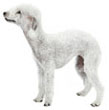








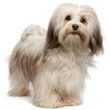






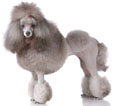











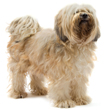



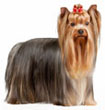







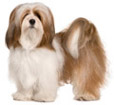






















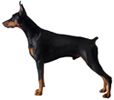









没有评论:
发表评论